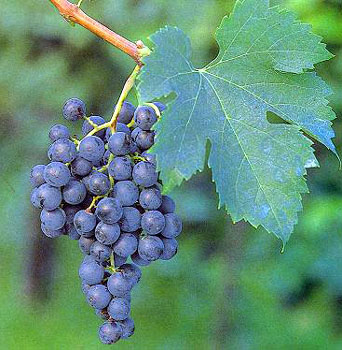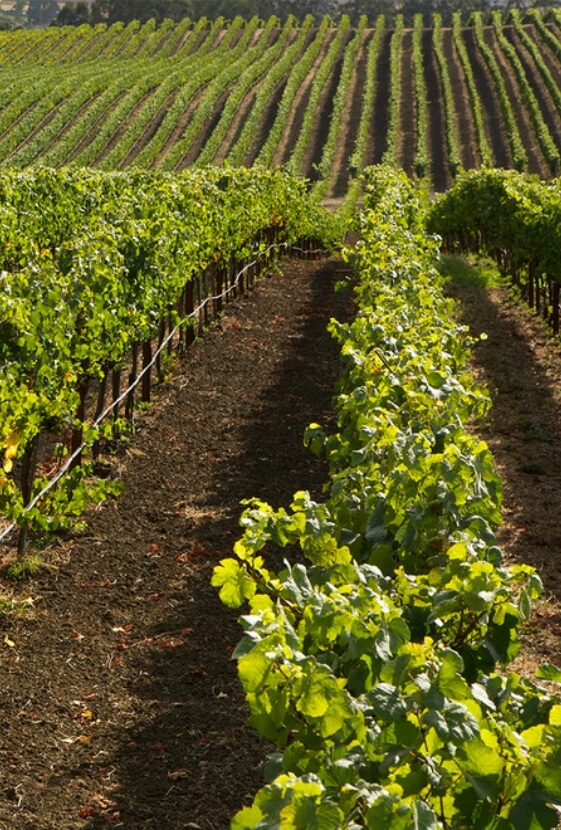
Grape Glossary
In Bordeaux, Merlot is traditionally blended with Cabernet Sauvignon, Cabernet Franc and Petit Verdot, rounding out Cabernet’s tannic austerity. Cabernet Sauvignon dominates the blends of the Médoc and Graves, where the soils are warm and gravelly, while Merlot is the greater part of the blend in Pomerol and St.-Emilion, with their clay and limestone soils.
Outside of France, Merlot is usually vinified as a varietal wine, with varying results. If overcropped, it produces thin, vegetal wines, but treated with care it can yield plump, succulent wines and even massive, dense blockbusters. Its velvety tannins make the wine approachable when young, yet Merlot takes on additional depth and complexity with oak aging.
The Merlot vine tolerates damp, cool, dense clay soils but also thrives in well drained gravel. It is potentially highly prolific and buds early, leaving it vulnerable to both spring frost and coulure (the failure of the flowers to develop into berries). Merlot also ripens early even in cool climates, which helps the development of color and phenols in the fruit and protects its low acidity, which in hot climates can evaporate easily. The berries are high in color and sugar, not very tannic, and thin-skinned. Merlot is susceptible to rot in humid conditions.
Merlot is a relatively recent grape and is assumed to be native to Bordeaux. It has been traced only as far back as 1784, to the right bank of the Gironde, and by the mid-1800s it had made its way to the left bank. Bordeaux is the largest Merlot vineyard in the world, where the grape accounts for over half of all plantings.
The name is derived from merle, French for blackbird, either for the color of the fruit or because the blackbird is the first to eat the ripe grapes. Research suggests Merlot may be a mutation of Cabernet Franc, though it also strongly resembles Carmenère.

